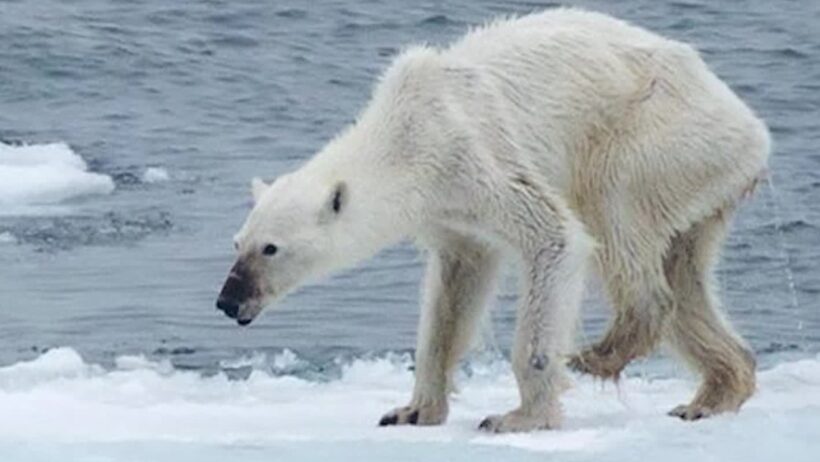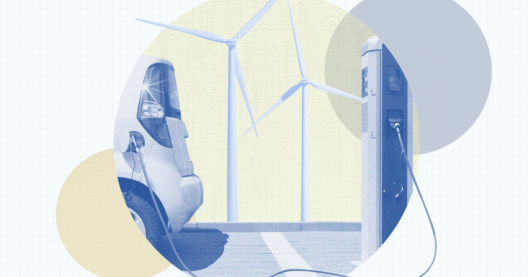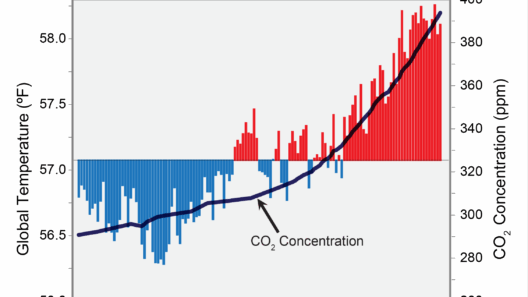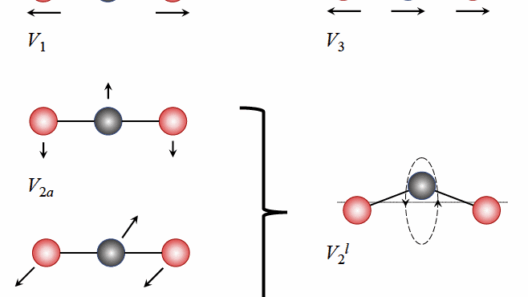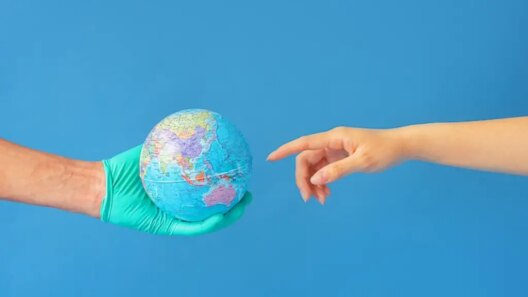The polar ice caps, those majestic and ethereal expanses of white, serve as crucial sentinels of the Earth’s climate. However, as global temperatures continue to surge, these icy behemoths are succumbing to the relentless grip of warming, shedding their storied ice cover like a tattered cloak. This phenomenon not only signifies the fragility of these frozen realms but heralds a cascade of repercussions for our planet’s ecosystems and, subsequently, for humanity itself.
To comprehend the magnitude of this transformation, one must first grasp the role of polar ice caps in Earth’s ecosystem. The polar ice caps function as a thermal regulator, reflecting sunlight back into space, thereby moderating global temperatures. This splendid natural reflector acts like a giant air-conditioning unit, keeping the planet cool in the face of solar intensity. As the ice caps recede, more sunlight is absorbed by the darker ocean waters, accelerating the warming process in a feedback loop akin to a runaway train, gathering speed with every moment.
In the Arctic, where a palpable sense of isolation and serenity resides, the effects of melting ice are starkly visible. The iconic polar bear, once a symbol of the frozen frontiers, finds itself increasingly on the brink of extinction due to habitat loss. These magnificent creatures, with their majestic white coats and formidable presence, are now emblems of the climate crisis. As sea ice diminishes, polar bears face a dire struggle for survival, often necessitating long treks over vast expanses of open water to find sustenance. The evocative image of an emaciated polar bear, yearning for its next meal amidst an ocean devoid of ice, encapsulates the tragic paradox of an apex predator teetering on the edge of despair.
Beyond the surface, the implications of melting ice extend into the intricate web of life that inhabits the Arctic. Seals, the primary prey of polar bears, rely on stable ice platforms for breeding and resting. As these platforms disappear, so too do the seals, leading to an ominous domino effect that reverberates through the food chain. This disarray could engender not just the decline of solitary species but could unravel entire ecosystems, fostering instability that can ripple outwards, transcending geographical boundaries.
The thawing of the polar ice caps also portends dire consequences for global sea levels. Estimates indicate that should the Greenland ice sheet—and its colossal reservoirs of trapped water—continue to melt at the current pace, we could witness an unprecedented rise in sea levels that threatens coastal communities worldwide. Places such as Miami, New Orleans, and even New York City may find themselves confronting existential challenges. Today’s idyllic coastal views could transform into harrowing images of inundation, with waves lapping at the doorsteps of homes that once stood tall against the perils of nature.
Additionally, the release of methane—a potent greenhouse gas—trapped under the ice poses an alarming threat. As permafrost thaws, dormant pockets of this gas begin to escape, further exacerbating the already critical situation of global warming. The metaphor of a Pandora’s box springs to mind, as these ancient gases emerge to fuel the very crisis we are struggling to contain. The intermingling of marine and terrestrial ecosystems will shift, as species adapt or perish, reshaping the biological mosaic of our planet in ways we are only beginning to understand.
The repercussions of melting ice extend to more than just localized environments; they reverberate through global climate patterns. Disruptions in ocean currents caused by the influx of freshwater from melting ice can alter weather systems—a phenomenon known as “dipping” or changing jet streams. Such shifts may translate into extreme weather events, including hurricanes that gain ferocity and erratic rainfall patterns that lead to both droughts and flooding. The vulnerability of agricultural systems in various regions places food security at risk, making the case for transdisciplinary action more pressing than ever.
While the narrative appears grim, it is crucial to recognize that there is still a window of opportunity for intervention. Collective efforts to mitigate climate change through aggressive reductions in greenhouse gas emissions have the potential to slow the melting of polar ice caps. The transition to renewable energy, robust policies aimed at conservation, and innovative technologies can function as potent antidotes to the malaise afflicting our planet.
Public awareness campaigns can serve as a clarion call, rallying communities to action. Initiatives to educate and empower individuals can inspire local changes that have a cumulative impact on global toils. By fostering a sense of stewardship for our planet, humankind can reclaim its role as a guardian, rather than a conqueror, of the Earth’s resources.
In conclusion, the melting of the polar ice caps unveils a tragic narrative—a vivid testimony to the fragility of our climate. The interdependence of ice, ocean, and life calls for an urgent reassessment of our relationship with the planet. As the giants of ice diminish, they whisper warnings of the consequences of inaction. It is time to heed those whispers, to forge a new path forward, one that recognizes the sanctity of nature and commits to preserving the delicate balance of our shared home.



